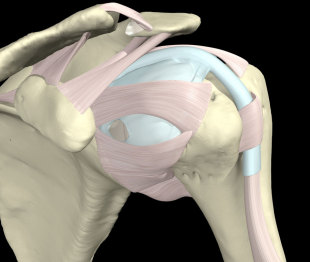The Age of Deception: Nuclear Diplomacy in Treacherous Times by Mohamed ElBaradei
Reviewed by Kaveh L Afrasiabi
This book, eloquently written by a former director-general of the International Atomic Energy Agency (IAEA), is a must read, both for the wealth of information it provides on the contentious issues of global nuclear diplomacy as well as for the passionate and compelling case that it presents for a war crime tribunal to
In blunt yet sincere language steeped in international law, ElBaradei writes that in light of the US's complete "disdain for international norms" in its invasion of Iraq, the United Nations should request an opinion from the International Court of Justice (ICJ) as to the legality of the Iraq war.
 Convinced
that the overwhelming weight of evidence favors a
negative verdict if the ICJ ever braved such an
initiative, ElBaradei then makes a case for the
International Criminal Tribunal to "investigate
whether this constitutes a war crime". (pg 87)
Convinced
that the overwhelming weight of evidence favors a
negative verdict if the ICJ ever braved such an
initiative, ElBaradei then makes a case for the
International Criminal Tribunal to "investigate
whether this constitutes a war crime". (pg 87)
Irrespective, ElBaradei is so morally outraged by the blatant pulverization of a sovereign Middle East country by a Western superpower and its allies that he also advises the Iraqis to demand war reparations - that is sure to amount to tens of billions of dollars.
If for nothing else, this book's value - in putting self-righteous Western powers on the defensive and depicting them as essentially rogue states that have caused a new global anarchy by their willful exercise of power without much regard for the rights of others - is indispensable.
Divided into 12 chapters with a useful conclusion on the future of nuclear diplomacy, the book covers nearly three decades of the author's involvement with various cases, ie, Iraq, North Korea, Libya and Iran, the notorious "nuclear bazaar of Abdul Qadeer Khan" in Pakistan, as well as nuclear asymmetry and the hypocrisy and double standard, not to mention outright deceptions, marking the behavior of US and other Western countries (along the familiar North-South divide).
In the chapters on Iraq, ElBaradei defends the cherished record of his agency in refusing to act as a sounding board for post 9/11 warmongering US policies, which earned him the occasional venom of US media that questioned his integrity. In fact, ElBaradei is equally critical of the compliant Western media that often act as indirect apparatuses of state despite their wild claims of neutrality and objectivity.
Although much of what ElBaradei writes about the US-British deceptions to go to war in Iraq is already well-known, it is instructive to revisit those "grotesque distortions" - as he puts it - from a reputable source who for years was caught in the maelstrom of contesting politics of non-proliferation.
With respect to the British role under premier Tony Blair, whom he accuses of a false alarm on Iraq's chemical weapon capability, ElBaradei actually underestimates the degree to which London influenced Washington on Iraq, characterizing this instead as a "one-way street" with the British "acting as apologists for US". (pg 67).
But, ElBaradei is not a foreign policy expert and his shortcoming, in detecting the American foreign policy elite's vulnerability with respect to British political influence, is forgivable. This is a minor defect in a solid contribution that sheds much light on how the US manipulated the UN atomic agency as "bit players" in its scheme to invade Iraq.
It shows the Pandora's box opened by the IAEA when it agreed to receive foreign intelligence from member states spying on others, thus opening the door to calibrated disinformation often beyond the ability of the agency and its meager resources to authenticate.
As a result, today the IAEA has turned into a de facto ''nuclear detective agency" that constantly receives tips from Western clients targeting specific countries. Sooner or later, either this unhealthy situation is rectified or we must expect more gaping holes in the agency's credibility.
With respect to North Korea, which has exited the nuclear Non-Proliferation Treaty (NPT) and proliferated nuclear weapons without much international backlash, ElBaradei blames the US's failure to live up to its agreed commitment and the fallacy of "attempts to contain proliferation ambitions through confrontation, sanctions, and isolation". (Pg 109)
He also writes about Libya's voluntary disarmament in 2004, a decision that the late Muammar Gaddafi now regrets in his grave, given the likelihood that the North Atlantic Treaty Organization (NATO) would have thought twice about attacking Libya under the guise of "responsibility to protect", thus making a mockery of the UN, if Tripoli had retained a nuclear shield.
For sure, this issue must loom large on the mind of many developing nations that have clashing interests with the (increasingly bullying) Western powers.
ElBaradei has devoted a whole chapter to the subject of nuclear double standards that discusses, for instance, how South Korea's clear evidence of non-compliance was shoved under the rug by the US in 2004 simply because it is a US allay.
The US and other privileged nuclear-have nations have been derelict in their NPT obligations to move toward nuclear disarmament, some, like France and Britain, modernizing their arsenals, while at the same time having the audacity of taking the moral high ground against countries suspected of clandestine proliferation.
ElBaradei writes that in the Middle East, "The greatest source of frustration and anxiety was the regional asymmetry of military power symbolized by Israel's arsenal." (pg 223) And yet, Israel, which since its bombardment of Iraq's nuclear facility in 1981 has been mandated by the UN Security Council to place its nuclear facilities under the IAEA inspections, has evaded this obligation with impunity.
Regarding Iran, extensively dealt with in four chapters, ElBaradei seeks to present a balanced account that pinpoints the chronology of events, interactions and negotiations that are still ongoing as of this date, thus making the book an indispensable tool for those who follow the developments in the Iran nuclear crisis.
Since his retirement from the IAEA, ElBaradei has repeatedly gone on record to state that during his tenure at the agency he never saw any evidence that Iran was proliferating nuclear weapons.
What is more, he informs readers that after the 2007 US intelligence report that confirmed that Iran's program had been peaceful since 2003, "I received a follow-up briefing by US intelligence. They did not show the supposed evidence that had let them to confirm the existence of a past Iranian nuclear weapon program, other than to refer to the same unverified set of allegations about weaponization studies that had already been discussed with the agency." (pg 269)
He also writes, "The Americans did acknowledge - as in most previous intelligence briefings - that there was no indication that Iran had undeclared nuclear material." (pg 262) Indeed, this is important information, given that in more than a dozen reports on Iran the IAEA has repeatedly confirmed the absence of any evidence of military diversion of "declared nuclear material".
In Chapter 11, on the "squandered opportunities" with Iran, the author writes about Iran-IAEA cooperation through a workplan that resulted in the successful resolution of the "six outstanding" issues that had led to the IAEA's referral of Iran's file to the UN Security Council.
Missing in this book is any mention of that workplan's concluding paragraph that stipulated the agency's treatment of Iran's nuclear file as "routine" once those issues were resolved. That this did not, and as of today has not, happened is solely due to the US-led disinformation campaign that burdened the IAEA with new data coming from a stolen Iranian lap top, even though ElBaradei readily admits that "the problem was, no one knew if any of these was real". (pg 281).
He discretely blames his deputy, Ollie Heinnonen, now turned into a valuable US asset from his recruitment by Harvard University, of buying "into the US accusations" (pg 281), and laments the fact that on a number of occasions the US scuttled meaningful negotiation with Iran by "refusing to take yes for an answer".
Questioning the US's negotiation strategy toward Iran, in a memorable passage that rings relevant to today's context of new multilateral talks with Iran, ElBaradei writes: "It was naive to ask Iran to give up everything before the start of the talks and expect a positive response. But the problem was familiar, nothing would satisfy, short of Iran coming to the table completely undressed." (pg 313)
In a clue to the direct relevance of this book to the Iran nuclear talks this weekend in Istanbul, where the US has put its foot down by demanding Iran's suspension of its 20% uranium enrichment, ElBaradei readily admits that under the NPT, Iran has the right to possess a nuclear fuel cycle, like "roughly a dozen countries" around the world. Moreover, he reminds us of the absence of a legal basis for the US's demand, in light of the fact that "many research reactors worldwide also use 90% enriched uranium fuel for peaceful purposes, such as to produce medial radioisotopes". (pg 14)
As he puts it in the final chapter, on the quest for human security, this cannot be a selective, or rather elitist, process that benefits some while depriving others. In today's increasingly interdependent world, the idea that the threat of nuclear proliferation can be contained while the asymmetrical nuclear-have nations hold onto their prized possessions and even use them to threaten the non-nuclear nations, is simply a chimerical dream that has a decent chance of turning into a nightmare. This is the core message of ElBaradei's timely book that cannot be possibly ignored.
The Age of Deception: Nuclear Diplomacy in Treacherous Times by Mohamed ElBaradei. Metropolitan Books, Henry Holt and Company, New York, 2011. ISBN-10: 0805093508. Price US$27, 322 pages with index 340 pages.
Kaveh L Afrasiabi, PhD, is the author of After Khomeini: New Directions in Iran's Foreign Policy (Westview Press) . For his Wikipedia entry, click here. He is author of Reading In Iran Foreign Policy After September 11 (BookSurge Publishing , October 23, 2008) and Looking for rights at Harvard. His latest book is UN Management Reform: Selected Articles and Interviews on United Nations CreateSpace (November 12, 2011).
(Copyright 2012 Asia Times Online (Holdings) Ltd. All rights reserved. Please contact us about sales, syndication and republishing.)



